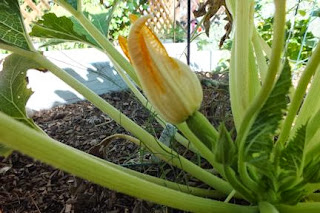Visit our developing garden blog on the justaz.com website for images and info on growing veggies and herbs. (2025)
Fresh or dried, herbs add flavor and depth to almost any
dish. But purchasing fresh herbs at the supermarket can get expensive. If you
grow your own herbs, whether in a large garden or in a few small pots, you'll
not only save money, you'll impress your family and friends with your culinary
genius.
 |
| Rosemary Shrub |
Rosemary
A hardy perennial native to the Mediterranean, the rosemary plant now grow almost worldwide. In temperate climates, such as the southwest United States, a rosemary plant may live as long as 15 years in an outdoor garden.
A hardy perennial native to the Mediterranean, the rosemary plant now grow almost worldwide. In temperate climates, such as the southwest United States, a rosemary plant may live as long as 15 years in an outdoor garden.
Rosemary has an earthy, pungent aroma that complements beef
and chicken, and just a little is needed to add depth to roasted vegetables.
 |
| Sage Plant |
Sage
Sage has an earthy aroma that reminds you of Thanksgiving dinners and hot pork roast sandwiches. A perennial herb, sage produces for up to three years before its leaves start to lose that rich, pungent flavor. Use fresh if you want a strong, savory taste but use sparingly, as fresh sage can overpower other flavors in the dish.
Sage has an earthy aroma that reminds you of Thanksgiving dinners and hot pork roast sandwiches. A perennial herb, sage produces for up to three years before its leaves start to lose that rich, pungent flavor. Use fresh if you want a strong, savory taste but use sparingly, as fresh sage can overpower other flavors in the dish.
When drying this herb, leave the leaves whole. Rub the dried
leaves between your fingertips when you add this herb to your dishes for controlled,
subtle taste.
 |
| Oregano Plant |
Oregano
The word oregano means, "Joy of the mountain" in Greek; it grows wild and in abundance in that Mediterranean country. This earthy herb has a strong, sharp flavor to it that balances well with sweet tomato sauces, is essential to Mexican cooking, and adds a rich flavor to eggs and sausages.
The word oregano means, "Joy of the mountain" in Greek; it grows wild and in abundance in that Mediterranean country. This earthy herb has a strong, sharp flavor to it that balances well with sweet tomato sauces, is essential to Mexican cooking, and adds a rich flavor to eggs and sausages.
Thyme
Common thyme grows well under a wide range of conditions,
making it a kitchen garden favorite. Use thyme in sauces, marinades, and in
soups, and pair it with chicken, fish or roasted vegetables.
 |
| Thyme Plant |
If you want to eliminate table salt from your cooking, replace
it with thyme. This herb brings out the natural flavors of food, enhancing any
dish in much the same way as salt does, only without the negative health
effects.
Basil
No garden is complete without basil. Try adding a variety of basil plants such as spicy globe, purple ruffle, Thai basil and of course, sweet basil. Use spicy globe in Mexican dishes, and purple ruffle or Thai in stir-fry.
No garden is complete without basil. Try adding a variety of basil plants such as spicy globe, purple ruffle, Thai basil and of course, sweet basil. Use spicy globe in Mexican dishes, and purple ruffle or Thai in stir-fry.
 |
| Basil Plant |
Sweet basil is an essential ingredient in many Italian
dishes. And nothing tastes fresher on a summer's day than sliced tomatoes
topped with thin slices of mozzarella cheese and sprinkled with ribbons of
bright green basil.
Parsley
An annual herb, parsley does more than garnish your plate for presentation. It has a savory undertone to it that adds depth and interest to soups and stews when stirred in at the last moments of cooking.
An annual herb, parsley does more than garnish your plate for presentation. It has a savory undertone to it that adds depth and interest to soups and stews when stirred in at the last moments of cooking.
 |
| Parsley Plant |
Parsley grows best in the cool weather, and though it
doesn't have a long growth period, two or three plants may provide you with
enough parsley for drying to last you to the next growing season. Use this
dried herb with dried basil, oregano and thyme for an herbal seasoning mix perfect
for meatballs or Italian meatloaf.
Mint
Mint has an unmistakable scent to it: sharp, crisp, fresh. Used in an array of foods, from meat to vegetables to candy and cocktails, mint is an abundant producer. One plant in your garden is likely to suffice simply because it continues to spread. Consider growing mint in a container to control its prolific growth habit.
Mint has an unmistakable scent to it: sharp, crisp, fresh. Used in an array of foods, from meat to vegetables to candy and cocktails, mint is an abundant producer. One plant in your garden is likely to suffice simply because it continues to spread. Consider growing mint in a container to control its prolific growth habit.
 |
| Mint Plant |
Herbs add finesse to your dishes, and though your family and
friends may not say, "Oh, I taste the oregano in this enchilada
sauce," that's okay. What you want them to say is, "These are the
best enchiladas I've ever had."
The contents of this blog, including images, are copyrighted to justaz.com productions. 2014














